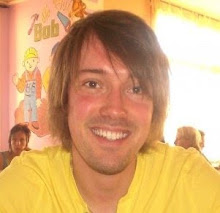
I also found several musical groups at the docks who were all great:

Here is a view of a ship arriving into the Waterfront harbour before I set off for Robben Island:

After wandering around for a while and worrying about sea-sickness I boarded the boat to Robben Island. The tour included a bus ride around the island. Prior to its use as a prison, the island was used to home a leprosy colony, the legacy of which is this eerie graveyard:

Next on the tour is the lime quary where the prisoners worked to produce material for the roads on the island. The cave you can see on the left of the picture was used as a shelter during break times by the prisoners and is the place where the modern democratic constitution of South Africa was formed:

You may also notice a pile of rocks and this is very symbolic. On a recent visit to the island, Mandela and other dignitaries walked around the quarry and in a typically impromptu act, Mandela dropped a rock on the ground. All of the others followed suit until there was a large pile of assorted rocks of all shapes, sizes and colours. This represents the Rainbow Nation.
Due to the bright sunshine and reflective rock surface, many of the prisioners here suffered from eye problems later. In fact, when Mandela left the island he required several eye operations as a result. To this day, no one is allowed to use a flash when photographing him. Other prisoners suffered from lung cancer due to the inhalation of limestone dust.
Our next stop was to the maximum security prison:

We were met by our guide, Derek, a former political prisoner himself:

Derek told us his personal story; he was sentenced to 7 years here in 1986 for sabotage. He and his group set fire to a government building containing important information. I had huge admiration for Derek for being able to do the job he does, spending hours every day at the very prison in which he was incarcerated, reliving the bad times. I'm not sure I could do such a thing, but rather than being bitter and begrudging Derek is positive and excited about a future South Africa and holds no animosity towards his captors. He is even quick to make the point that many of the guards here were nice to him.
Derek led us to Section B (Mandela's section) where we were shown the courtyard where prisoners worked breaking rocks and making textiles:

Here is how it looks today:

Here is a view of the Section B prison block. Mandela's cell window is the one on the right:

Here is the view into his cell (No. 5), preserved as it would have been during his imprisonment:

Robben Island is (along with Auschwitz) the most desolate and thought-provoking place I have ever been. After 2 hours I was ready to leave. Imagine spending 18 years here as Nelson Mandela did, and 27 years imprisonment in total.



No comments:
Post a Comment